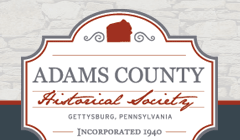Document Type
Article
Abstract
In the fall of 1899, Colonel John Nicholson reported on the recent changes being made to the Gettysburg National Military park. The park held a dedication ceremony that July for a new equestrian statue to General John Reynolds erected northwest of town. It was a shiny goldenbrown, polished-bronze statue sculpted by Henry Kirke Bush-Brown (his second equestrian statue at Gettysburg in three years). The horse and rider, balancing on two legs stood on a large pedestal near the new avenue in his name. Reynolds Avenue and adjoining Wadsworth, Doubleday, and Robinson Avenues were new to the battlefield as well. These were exciting times. The first-day's battlegrounds were being made accessible to visitors and veterans. In fact, the entire battlefield was being paved, marked, and restored by the Gettysburg National Park Commission (GNPC).
Colonel John Nicholson (USA), Major William Robbins (CSA), and Major Charles Richardson (USA) comprised the GNPC. Each a veteran of the battle, they had been appointed by the War Department to restore the field at Gettysburg. Former Confederate veteran Robbins was specifically appointed to oversee the placement of new markers detailing the Army of Northern Virginia's role in the battle. Ever since the War Department took over care of the grounds six years prior because the local Gettysburg Battlefield Memorial Association (GBMA) could no longer afford the upkeep, signs for both Union and Confederate troop placements were ordered. Confederate markings were just one of several radical changes to the park's landscape design in 1899. [excerpt]
Recommended Citation
Dixon, Benjamin Y.
(2000)
"The Gettysburg Battlefield, One Century Ago,"
Adams County History: Vol. 6, Article 3.
Available at:
https://cupola.gettysburg.edu/ach/vol6/iss1/3
Included in
Cultural History Commons, Military History Commons, Public History Commons, Tourism Commons, United States History Commons
